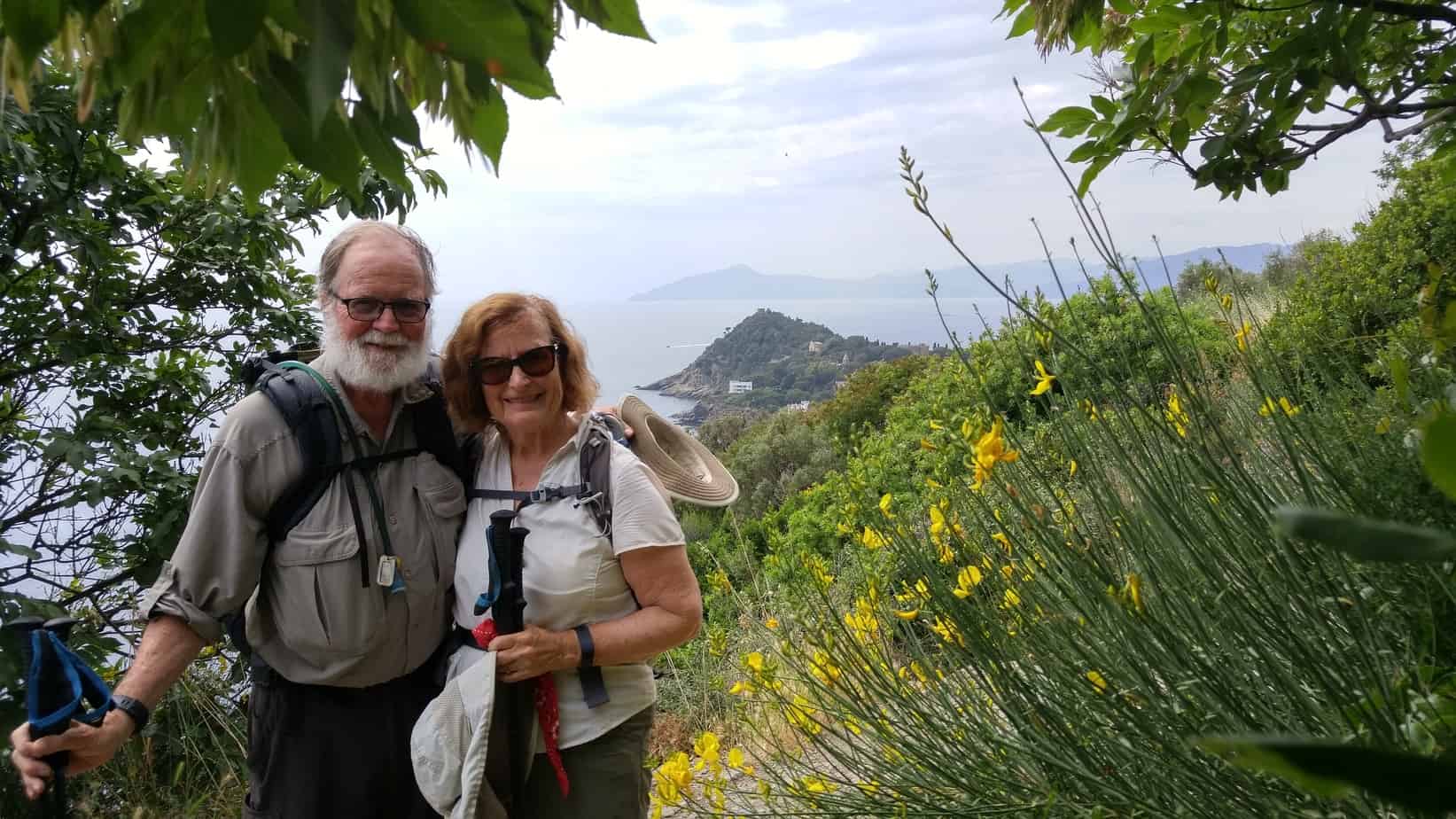
Training for Hiking Walking, and Backpacking*
Judging by what people post on social media, many who would enjoy hiking or backpacking don’t go because they lack confidence. Perhaps they used to backpack, but stopped when they began more involved in raising a family or building a career. Now that they are older, they aren’t sure if they are still physically able to do it.
Or, maybe they have never done much hiking/backpacking and don’t know how to judge what they could do. They’ve had thoughts about joining a group to visit the hill-towns of Italy. Perhaps they’ve dreamed about walking one of the routes of the Camino de Santiago. Maybe they even envision climbing Mount Blanc or Mount Kilimanjaro. But they don’t know if they’d be able to keep up with a group, or to complete their solo treks.
The good news is that most anyone of any age can improve their fitness level and health by walking. And, if you keep at it, you will be able to see much more of the world on foot!
10 steps for optimal training for hiking, walking, backpacking:
1.Don’t rush it. Start where you are and build slowly and gradually in order to avoid injury. If backpacking is your goal, most experts advise alternating the components of your fitness program.
2.Alternate ‘demands’ when on the trail. Alternate increases in distance with increases in elevation gain. Alternate adding weight to your backpack with adding mileage or doing greater ascents and descents.
3.At the gym or home, alternate strength training with muscle endurance training. Strength training is lifting with more weight, but with fewer repetitions. Muscle endurance is less weight and more repetitions.
4.Don’t forget rest time. Allowing time for muscles to recover is not laziness, it should be part of your fitness routine. In addition to all of the above physical activity, you need to allow rest time (days off) and stretching exercises.
5.Pick up the pace. Whether on the trail or on the treadmill, pick up the pace. Though walking a mile in about 20 minutes (3 mph) is often sited as moderate, and doing a mile in about 15 minutes (4 mph) is considered brisk, that may or may not be the best pace for you. But, it will depend not only on your fitness level and desires, but also the terrain, the weather, and other environmental conditions.
To increase your aerobic strength, pick up the pace to the level where you can still talk in short sentences, but can’t sing. To make this happen, try interval training.
Interval Training is not a one-size fits all—but walk a distance at your normal speed, pick up the pace for a distance, drop back to your normal speed. Repeat. Over time, increase the frequency and time of the increased pace until it becomes your new norm.
6.Good footwear. If you are returning to hiking after a long absence, don’t just dig an old pair of shoes out of the closet. Get fitted and try various models—your old shoes may be too small.
Shoes styles have changed. The heavy mountaineering boots that were needed when carrying a 60-80 pound pack as people did 40 years ago are not needed when carrying a 10-30 pound pack today. Thousands of people wear trail runners on Camino treks and even on more challenging hikes such as the Pacific Crest and Appalachian Trails.
7.Set achievable goals. It is unwise to embark on a training program designed for someone else. If you haven’t exercised for a while, or want to up the ante, talk with your medical provider about what is appropriate for you. Doing too much too soon is likely to cause injuries and discouraging setbacks.
8.Schedule your training sessions. Just as with New Year’s resolutions, you are much more likely to follow through on fitness plans if you record your plan in detail and post the schedule on your calendar. Research as shown that vague promises to “get more exercise” are nowhere near as likely to succeed as regularly scheduled activities.
9.Reward stick-to-itiveness. Come up with some rewards that support your efforts. Would it be helpful for you to put a star on your calendar each day that you took a training hike? Or, would you find it more satisfying to measure your progress by keeping track of how many blocks or miles you walk and any increases you make? Some people reward themselves by buying new gear—a new pair of hiking socks or trekking poles; others work toward taking a more challenging hiking trip.

10.Don’t get in a rut. Though not every hike you take or every class session at the gym is going to be novel and exciting, look for ways to make your workouts more fun and more exciting. For some people, this may mean an interesting mix of music, for others, it may mean hiking with other people so the time flies.
My preferences—
For me, the ultimate is taking a hike with good friends on a “new” trail. Preferably, it also involves new challenges. Some people have favorite trails that they return to time and again—there they enjoy familiar places and changing seasons.
I prefer both changing scenery and reaching goals. For me, several of the local challenges: lthe Nifty Ninety Peak Challenge, the Bay Area Ridge Trail, the EBParks Trail Challenge, and the SF Crosstown have been very motivating and rewarding.
Your goal should be to discover what works for you!
*Websites for training routines–but use your own judgement!
Skills and fitness from Backpacker Magazine online
Hiking for Beginners from REI
The Hike Forever Fitness Plan from Backpacker.
